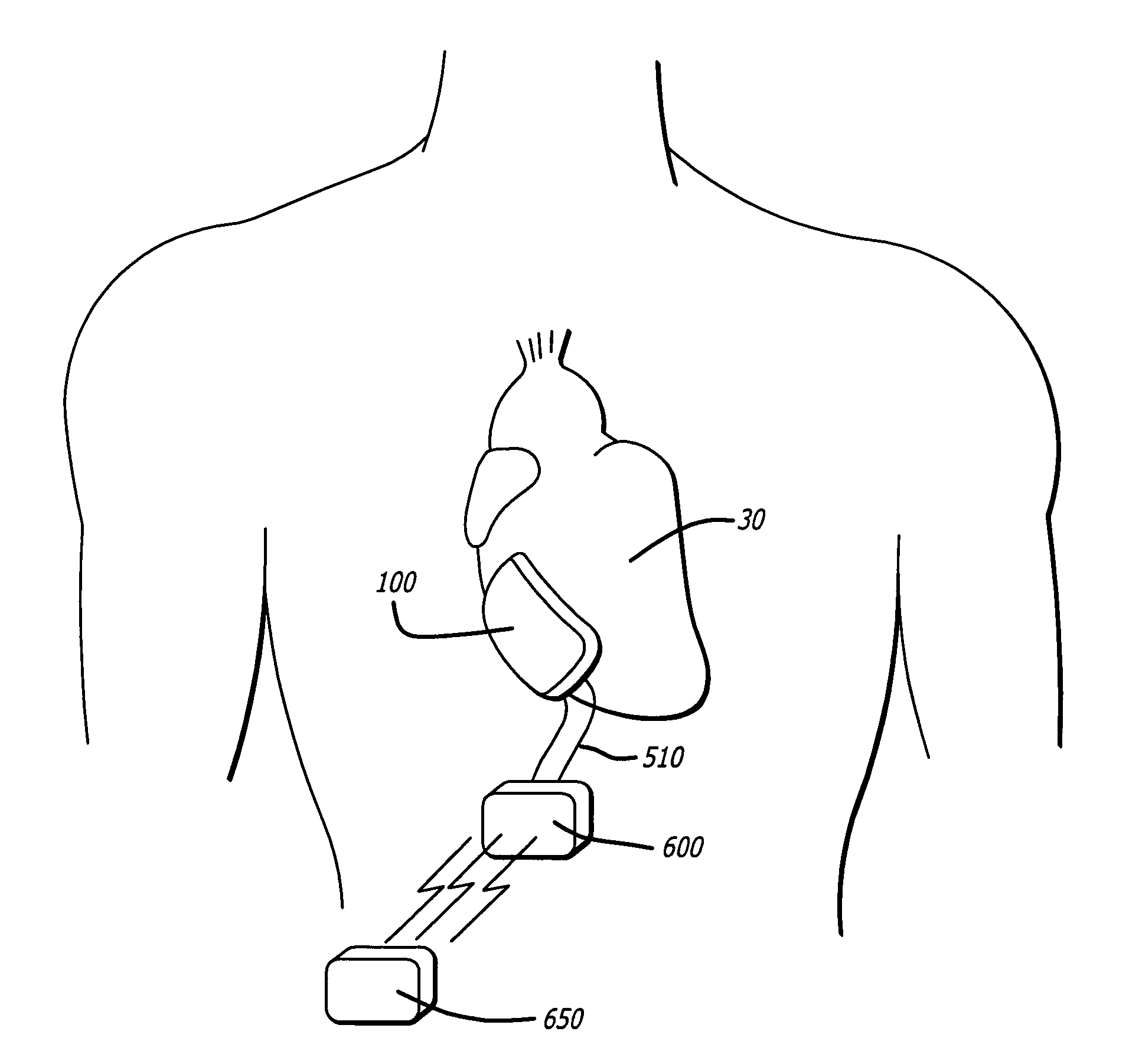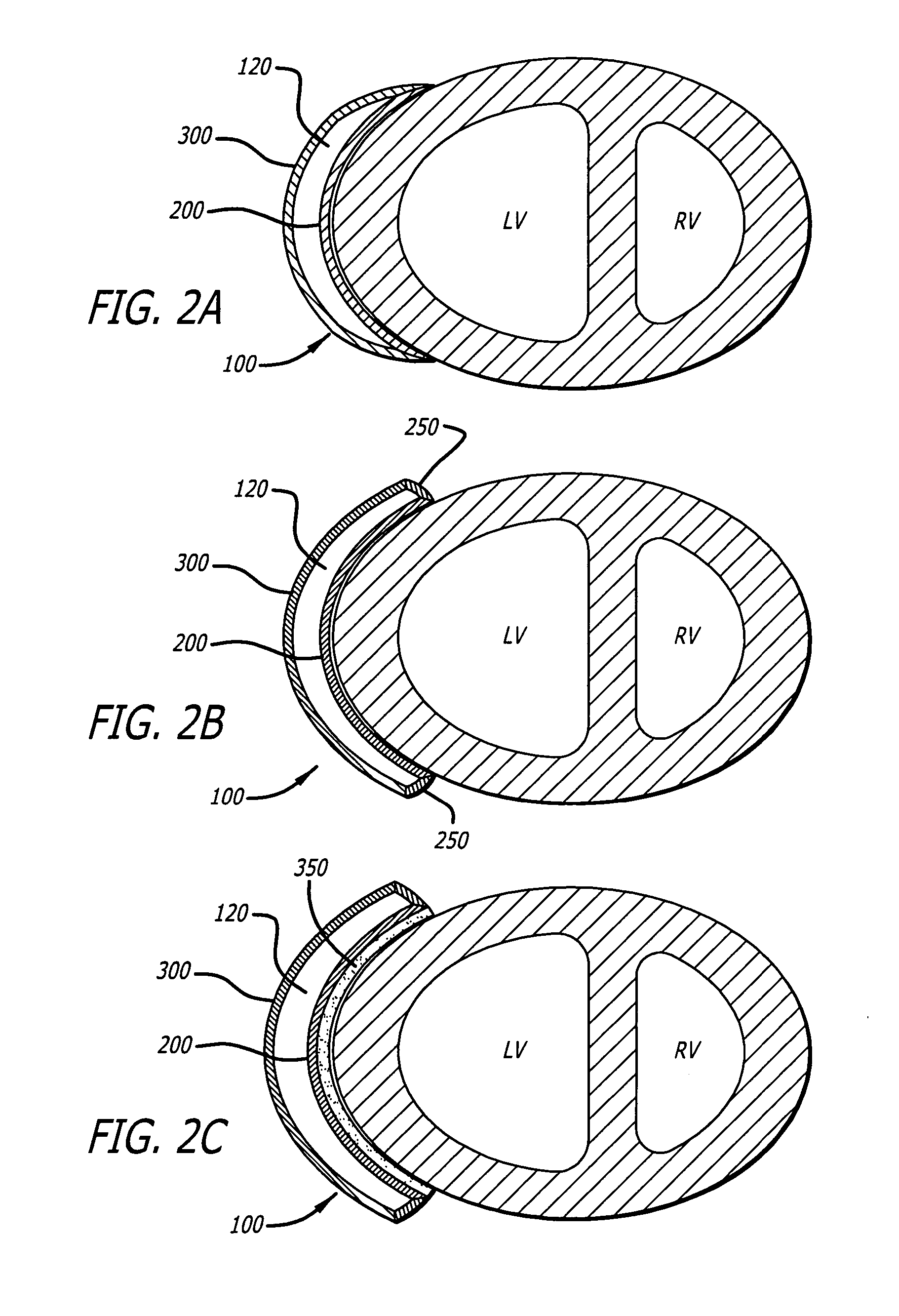Inflatable cardiac device for treating and preventing ventricular remodeling
- Summary
- Abstract
- Description
- Claims
- Application Information
AI Technical Summary
Benefits of technology
Problems solved by technology
Method used
Image
Examples
Embodiment Construction
[0078] Referring first to FIG. 1A, the present invention is an inflatable cardiac device 10 including an inflatable chamber 100 for implantation adjacent to the heart. The inflatable cardiac device 10 is designed for treating remodeling of the heart and preventing or reversing deleterious effects on cardiac function associated with congestive heart failure. The inflatable cardiac device is configured to attenuate and / or reverse remodeling. The inflatable cardiac device in at least one embodiment is implanted between the epicardium 30 and the pericardium 40, within the pericardial sac. As illustrated in FIG. 1B, the inflatable chamber 100 has a first collapsed or deflated configuration 110 for minimally invasive delivery and as illustrated in FIG. 1C, a second expanded configuration 115. The inflatable chamber 100 is preferably expanded following placement in the pericardial sac, although it may also be expanded before placement in the pericardial sac. In at least one embodiment, the...
PUM
 Login to View More
Login to View More Abstract
Description
Claims
Application Information
 Login to View More
Login to View More - R&D
- Intellectual Property
- Life Sciences
- Materials
- Tech Scout
- Unparalleled Data Quality
- Higher Quality Content
- 60% Fewer Hallucinations
Browse by: Latest US Patents, China's latest patents, Technical Efficacy Thesaurus, Application Domain, Technology Topic, Popular Technical Reports.
© 2025 PatSnap. All rights reserved.Legal|Privacy policy|Modern Slavery Act Transparency Statement|Sitemap|About US| Contact US: help@patsnap.com



